
Loudspeaker = Mechanical Filter
A loudspeaker also adds an inherent group delay, and the following measurements seemed to show something interesting that temporarily steered me away from the correct interpretation: While the overall delay through a loudspeaker seems the same for all frequencies, lower frequencies take longer to reach their full amplitude!
Figure 6 shows a SONAR DAW software project that recorded tones from 20 Hz to 120 Hz in 20 Hz intervals near the output opening of my down-firing SVS PB12-Ultra/2 subwoofer. This is a killer sub with twin 12-inch cones in a ported cabinet the size of a short refrigerator, powered by a built-in 1 killowatt amplifier. It also includes a variable low-pass input filter, but I disabled that to be sure I measured only the effects of the subwoofer itself.
I set SONAR to display milliseconds in the timeline at top. At 20 Hz you can see that the tone doesn’t reach full amplitude until after around 160 ms, while 120 Hz takes less than 20 ms. The initial rise time isn’t very clear at the lowest frequencies, so Figure 7 zooms in to show the first half-cycle on each track.
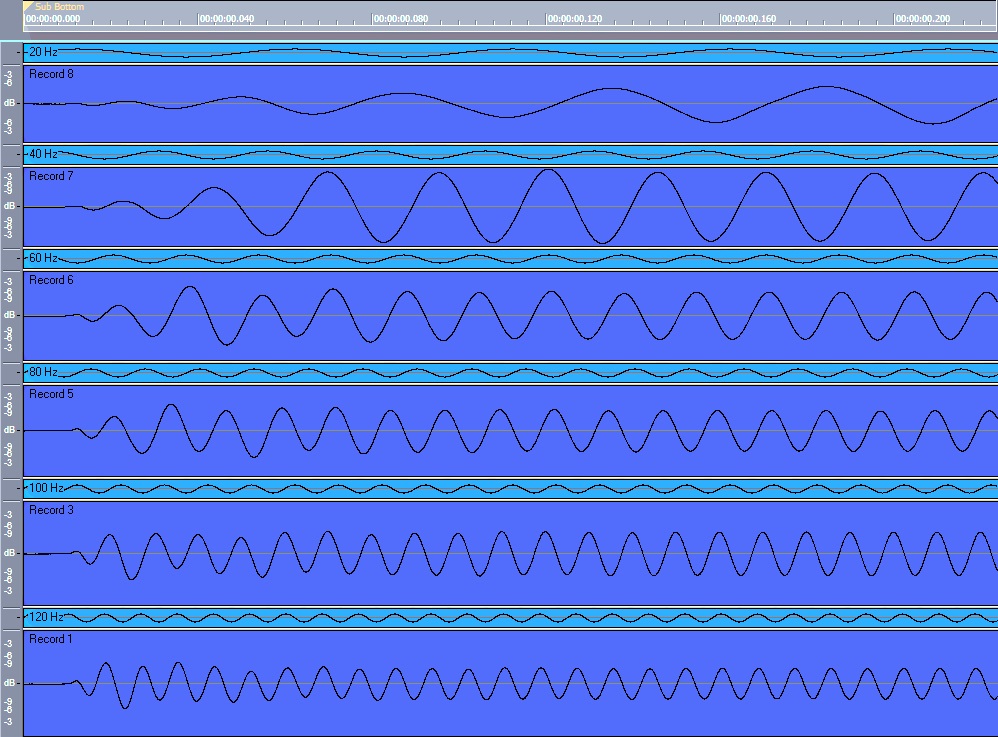
Even with all this data, it still wasn’t clear to me exactly what I was seeing. Is the delay through the crossover exactly the same at all frequencies? Is the initial delay from the subwoofer caused by its own properties, or is it merely latency through my sound card? And just as important, is the slow rise-time part of group delay, or due to some other effect? And look at the first two cycles in Figure 4 – why are they louder than the rest rather than softer?
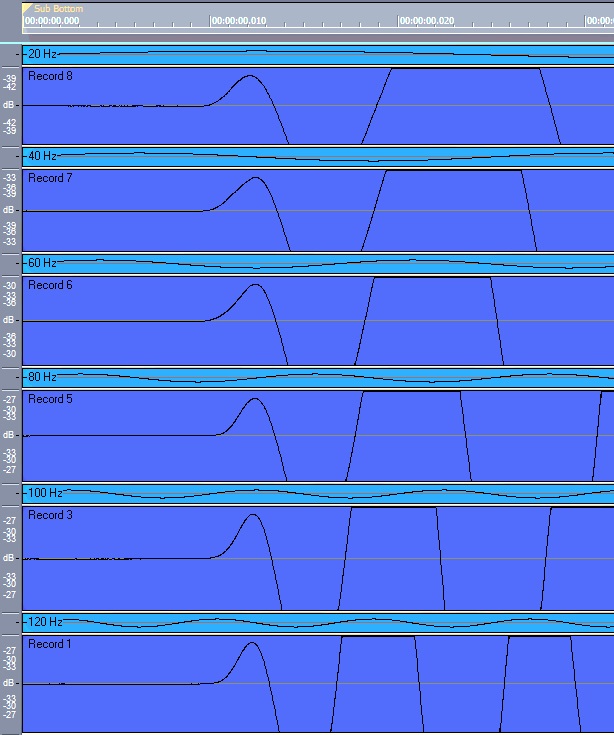
Eventually I realized I was in over my head and, it turns out, there’s no avoiding the math. So I called my friend Bill Eppler, who did the requisite math, created the graphs in Figures 8 and 9, and wrote an explanation that even someone as math-challenged as me could understand. From this I learned that the delay through a crossover isn’t really the same for all frequencies, and the slow rise-time is a side effect of the subwoofer’s inherent mechanical filtering. Let’s find out more from Bill.
Bill Eppler’s Report
Group delay is mathematically defined as follows:
The term “group” is used to distinguish its frequency dependence. Think of it in terms of a Fourier analysis of a complex signal with each frequency component being a “group.”
The supplied plots show the properties of half of an 80 Hz Linkwitz-Riley crossover. This is derived from a 2-pole Butterworth 80 Hz low-pass filter, with the resolution of the calculations set by a 5 kHz sample rate. I used half a filter for expedience, so a full 24 dB/octave crossover would add another identical filter cascaded (in series) with the first.
In the group delay plot of Figure 8, the low-pass delay of the full Linkwitz-Riley crossover at 40 Hz is about 6.4 ms, or twice the 3.22 ms shown here for half the filter. This is fully consistent with Ethan’s earlier crossover simulation that appears close to 7 ms. At 100 Hz the full crossover group delay is about 4.24 ms. This also appears consistent with Ethan’s simulations.
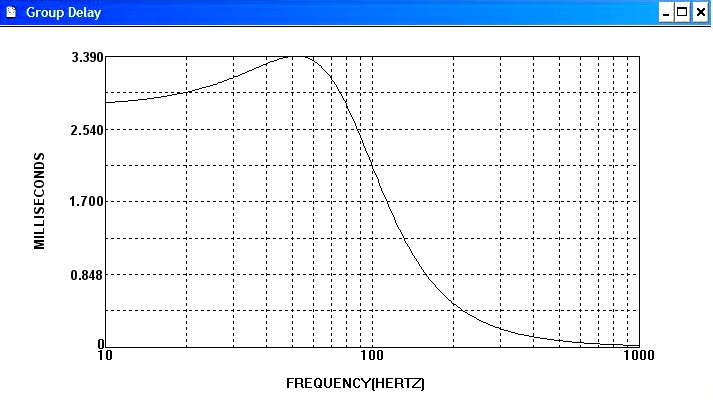
Now look at the step response plot in Figure 9. Notice about a 10 percent bump in the response at around 9 ms. This would compound to about a 15 percent bump in the full 24 dB/octave crossover. Since the frequency bumps are concluded before the first 40 Hz peak arrives, you wouldn’t notice it. One would expect the first half-cycle of 100 Hz to be higher than steady-state by that amount (15 percent), and that agrees with Ethan’s Figure 4.
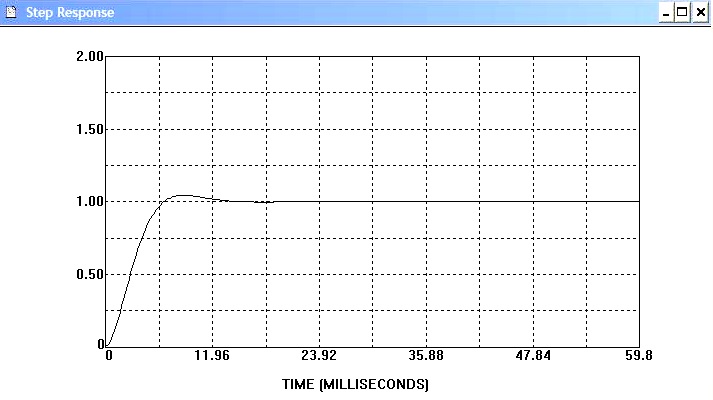
The subwoofer’s own behavior is a much more complicated system. Even though Ethan disabled the sub’s built-in variable low-pass “crossover” filter, the driver and enclosure constitute a multi-pole high-pass filter, probably around 24 Hz.
There’s also a multi-pole low-pass filter at a few hundred hertz inside the sub’s power amplifier, plus a high-pass filter around 20 Hz to protect the drivers from uncontrolled high excursion below the port’s resonant frequency. So a loudspeaker like this in a ported enclosure is at least a 4-pole high-pass filter – again around 18 to 24 Hz – plus a 4-pole low-pass at several hundred Hz, with neither the high-pass nor low-pass sections being close to maximally flat (or minimum phase). The group delay of such systems can easily be 20 to 100 ms in the 30 Hz range.
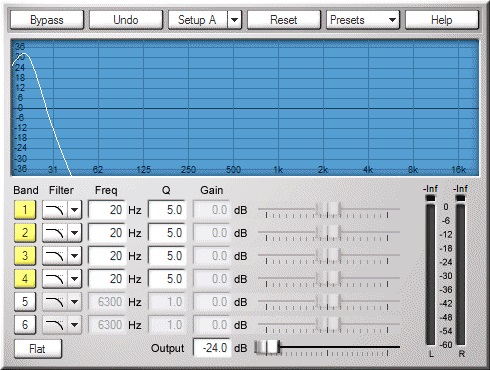
Follow-Up From Ethan
Not taking anything for granted, I wanted to prove empirically what Bill had told me: that the slow rise to full amplitude I measured in SONAR (Figure 6) was due to my subwoofer’s own mechanical filtering. So I created a 20 Hz sine wave and fed it through the 4-pole high-Q low-pass filter in Figure 10. The result shown in Figure 11 confirms that the slow rise to full output is not due to group delay, but simple filtering.
We know that high-Q filters ring at their chosen frequency, which creates an extended decay time when a sine wave source suddenly stops. But many don’t realize that a filter also causes that same frequency to swell over the same amount of time.
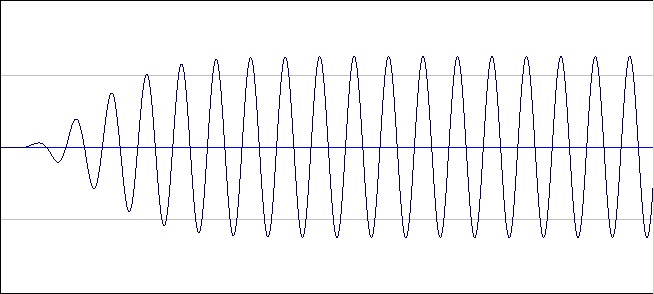
Ethan Winer has been an audio engineer and professional musician for more than 45 years. His Cello Rondo music video has received nearly 2 million views on YouTube and other web sites, and his book The Audio Expert published by Focal Press, now in its second edition, is available at amazon.com and ethanwiner.com. Ethan is also a principal of RealTraps, a manufacturer of acoustic treatment. Bill Eppler is a black belt electronics engineer and MIT graduate with decades of experience.
REFERENCES
[1] http://www.linear.com/designtools/software/#LTspice
[2] https://www.rane.com/note160.html
